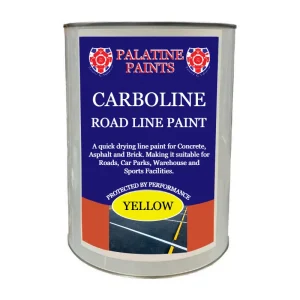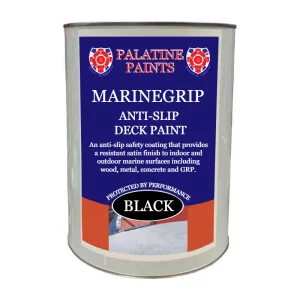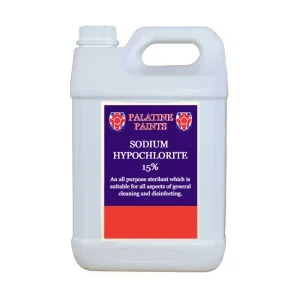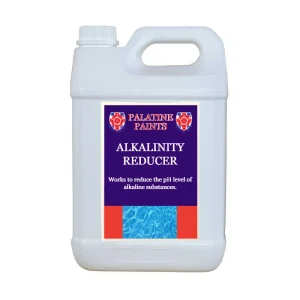All Blogs
Using Sodium Hypochlorite For Swimming Pools
What is Sodium Hypochlorite?
The following article discusses everything you might want to know about sodium hypochlorite and its application in swimming pools. You will understand why it is still the most preferred sterilisation method despite discovering various other techniques. Plus, you’ll learn about its safe application.
Sodium Hypochlorite is an alkaline liquid solution (or tablet in some cases) used to keep swimming pools free from disease-causing microorganisms. The solution consists of liquid Chlorine, sodium hydroxide, and water. Unlike some similar products, it doesn’t contribute any calcium or cyanuric acid to the pool.
Many people use sodium hypochlorite and liquid Chlorine interchangeably. But that is wrong. Because Sodium Hypochlorite is more than just liquid Chlorine, it is more correctly a chlorinating compound, you can also think of it as liquid bleach.
Using Sodium Hypochlorite for swimming pools remains the most popular method of sterilisation.
Table of Contents – An Overview
Is Sodium Hypochlorite safe? The General Characteristics
Sodium Hypochlorite is the product of a chemical reaction. Under ideal conditions, manufacturers induce a reaction between chlorine gas, sodium hydroxide solution, and water. And this yields the final product- Sodium Hypochlorite.
You must know how to identify Sodium Hypochlorite even without its packaging. Because this is a solution with strong corrosive qualities. Therefore, you have to be careful with it.
Commonly Sodium Hypochlorite solution is a clear liquid that looks yellowish. Plus, it has a strong characteristic chlorine odour. Being a strong alkaline substance, its pH ranges are 11 to 13.
Besides taking care of pathogens in the pool, Sodium Hypochlorite also plays a role in preventing and destroying Algae. Also, it effectively manages swimmers’ waste by oxidising it. And if you are wondering how much chlorine residue it is leaving in your pool, you can measure. This is not possible with other Chlorine-based sterilisers.
How Does It Work?
A chemical reaction occurs when you add the solution to your pool of water. In response to its contact with water, Sodium Hypochlorite quickly creates Hypochlorous Acid (HOCL). This further dissociates into Hypochlorous ion (-OCL) depending on the pH of the pool water.
To this date, HOCL is the most potent Chlorine-based sanitizer known to man. It is an active killing agent that can invade the cell walls of microorganisms present in the pool. After HOCL enters the cell, it interacts with the proteins and destroys the internal structure of the organism. Thereby killing it.
Moreover, HOCL is an oxidizer. Therefore, if non-living waste (such as dirt and contaminants from the swimmer’s bodies) is present in the pool water, HOCL will oxidise them. As a result, these contaminants will not mix with water and will keep separate.
A Short History Of Using Sodium Hypochlorite In Swimming Pools
The first Sodium Hypochlorite was a weak solution. It was developed in 1787. The credit for this discovery goes to French chemist Claude Berthollet.
Claude was working in Paris, and he passed Chlorine gas over Soda Ash (Sodium carbonate). And thus, he produced the first known Sodium Hypochlorite solution. Back then, they called it Javel Water. This name signifies the area in Paris where the discovery was made.
However, the worldwide use of Sodium Hypochlorite as a disinfectant was promoted by Antoine Labarraque. In 1820, Labaraqque discovered a cheaper way of manufacturing the solution- he used Sodium Hydroxide instead of Soda Ash. Later on, he found its various sterilising properties and shared his knowledge with the world.
What use Does Sodium Hypochlorite Have in Swimming Pools?
By the 1900s, everybody knew about the effectiveness of Sodium Hypochlorite in killing waterborne diseases. People have already seen that Chlorine can easily prevent cholera and typhoid fever when used as a disinfectant in water treatment plans.
As it had proven itself in the safekeeping of drinking water, it was only natural that people would consider it for their swimming pools. Plus, compared to other similar disinfectants like Calcium Hypochlorite or Chlorine gas, Sodium Hypochlorite was easier and safer to store.
The widespread use of the solution in public pools began in the 1920s. After that came the Polio Panic in 1940. People were too afraid to dip themselves in public pools because of polio. As Chlorine had the proven ability to kill Polio, Sodium Hypochlorite became the number one disinfectant for pool water treatment.
Since then, disinfection of pool water and using Sodium Hypochlorite in swimming pools have become synonymous. After that, when backyard pools became a popular thing in the 50s and 60s, Sodium Hypochlorite was the first choice as a sanitizer among ordinary people.
What’s the Difference Between Sodium Hypochlorite and Bleaching Powder?
Using Sodium Hypochlorite for swimming pools is not as popular as it used to be. They’ve now been replaced – Calcium Hypochlorite. And understanding their benefits could help you understand why that happened.
Although both of them give you the same results, there are some significant differences between them, these differences will drive you to prefer one over the other.
For instance, Sodium Hypochlorite is a liquid solution, whereas the calcium preparation is solid. However, the main difference between these products is cyanuric acid.
Calcium Hypochlorite tablets came into use because people wanted to stabilise the Chlorine they put in their pools. Because when you use liquid Sodium Hypochlorite solution, the Chlorine is cleared off from the water by sunlight in as little as four hours.
To solve this, manufacturers made Calcium Hypochlorite tablets with Cyanuric acid. CYA stabilises Chlorine and therefore prevents it from wearing out quickly.
However, this advantage of Calcium Hypochlorite eventually proved to be its most significant disadvantage. Because over time, the CYA can stabilise the Chlorine too much. As a result, inactive Chlorine and CYA can accumulate in the pool water, this is called a ‘Chlorine Lock.’
In the event of a Chlorine Lock, your pool water becomes resistant to the effects of Chlorine. So, no matter how much Chlorine solution you put in the pool water, it wouldn’t be able to show its sterilising results.
But this phenomenon doesn’t occur when you use liquid Sodium Hypochlorite because it doesn’t contain any CYA. Therefore, your pool will always remain reactive to the addition of Chlorine which is why most public pools will prefer Sodium Hypochlorite over bleaching powder or tablets.
How To Apply Sodium Hypochlorite In Your Swimming Pool?
When using Sodium Hypochlorite for your swimming pools, there are a few ways to apply it. For instance, you can manually add it to your swimming pool. Or you might use a feeder.
Manual addition
Sodium Hypochlorite is corrosive to metals in some cases. So, when you add it to your swimming pool, start from the end where there is no metal ladder or similar structures. This is usually the deep end of your swimming pool.
Although Cyanuric acid can cause Chlorine lock and make your pool resistant to the effects of the chemical, it is still an effective way to hold the added Chlorine in your swimming pool for longer. So, you can add some CYA separately to the swimming pool. Just make sure you are not overdoing it.
Lastly, when adding the solution to your pool, pour it slowly and closely to the surface. Because if you do it hastily, the solution may not distribute evenly in the water. On the other hand, slow and close pouring prevents splashing and saves you from getting the corrosive solution in your face or eyes.
Using a Feeder
If you don’t want to handle the corrosive solution directly, use a feeder. A positive displacement feeder pumps and distributes Sodium Hypochlorite throughout the pool. As a result, you don’t have to risk any skin injury.
However, swimming pool owners need to ensure that the machinery is calibrated correctly. Also, check that the tubes are free from any leaks and are tough.
Mind the pH of your pool
Sodium Hypochlorite gives Hypochlorous acid when it reacts with pool water. As a result, your water becomes slightly acidic when you add the disinfectant. Therefore, you will want to ensure the pool water has non-acidic pH before adding the solution. Otherwise, your water might essentially turn into acid.
However, don’t worry too much about it. Because small doses of the solution don’t make this happen. It only becomes a concern when using large quantities of disinfectant.
Continue reading…
What Are The Safety Measures During the Use Of Sodium Hypochlorite?
Sodium Hypochlorite is a highly potent substance. Therefore, it has strong corrosive effects and can cause significant damage if it comes in direct contact with the human body. That is why it is recommended to wear proper gloves and eye protection when you apply them. Also, please keep it away from food and store it in a safe place.
Ingesting the liquid
No one in sound mind will want to ingest this chemical because it gives off a robust repulsive Chlorine odour. However, if it somehow makes its way into a person’s gastrointestinal tract, there can be dire consequences.
The solution will severely damage the oral cavity, throat, and oesophagus. Plus, if the amount of ingested liquid is too much, poisoning can occur.
Rinse the mouth appropriately in the unfortunate or accidental event of something like this. And Do Not Induce Vomiting. Instead, you can swallow some milk and water to dilute it. Antacids can also help. In the meantime, contact emergency services as soon as you can.
To prevent something like this from happening, store the solution in a place that the children can’t get easy access to. Also, make sure you are keeping it away from food products.
Inhalation Hazards
As mentioned earlier, this disinfectant is a powerful substance. Even the fumes or gas it gives off at average room temperature has irritant effects on the respiratory tract. And prolonged exposure to Sodium Hypochlorite fumes can cause fluid build-up in the lungs (also known as Pulmonary Oedema).
To avoid this situation, store the solution in a well-ventilated room. Even the container you keep it in should not be sealed and have a proper air passage.
Also, limit your time around the solution as much as you can. And when you are working with it, be sure to wear a mask.
Contact with Skin or Eyes
To save your skin and eyes from the corrosive effects of the chemical, you should be using gloves and wearing protective goggles. And as told before, pour the solution slowly and close to the water surface.
If the liquid splashes and gets in your eyes, it can irritate and damage them. So, immediately rinse your eyes with water if something like that happens. If Sodium Hypochlorite gets in, you will want to rinse your skin and eyes with water for 15 to 20 minutes.
Prolonged skin contact with sodium hypochlorite can cause rashes, burns, and blisters. So, get rid of the contaminated clothing as fast as possible to prevent the liquid from seeping further into your body’s surface. And lastly, see a doctor.
Where can i buy Sodium Hypochlorite in the UK?
Palatine Paints Own Carboclor 15 is the Ultimate Sodium Hypochlorite Solution For Your Pool
If you are thinking about using sodium hypochlorite for swimming pools, then our very own Carbochlor 15 is the best product. This is a high-quality disinfectant that you can get at a reasonable price.
We are the manufacturer of this Sodium Hypochlorite product and Palatine Paints is renowned in this field. We have been providing the market with industrial and decorative paints and disinfectants for more than 70 years now. All this time, our customers have returned to us for superior products and services.
The Carbochlor 15 is a 15 percent Sodium Hypochlorite solution, the primary use of this sterilant is in swimming pools. However, you can also use it for other more general cleaning activities.
The 15 percent chlorine in the solution is very effective against Legionella bacteria and other common waterborne pathogens. Plus, it actively destroys Biofilms. You can use the product to prevent moss or algae formation in your pool. Plus, it is also effective in removing swimming pool odour.
What other products do you recommend alongside this?
We have manufactured a unique Alkaline Reducer which is used primarily to reduce the pH level of alkaline substances in swimming pool or spa water. Get yours here.
This product ensuring the correct water balance is maintained is important for a number of factors:
- Protection of the pool/spa water
- Water appearance and quality
- Chemical efficiency
- User comfort
BUY YOUR SODIUM HYPOCHLORITE TODAY
Sodium Hypochlorite 15% is an all purpose sterilant which is suitable for all aspects of general cleaning and disinfecting; with the main uses being in swimming pools/ paddling pools.
Uses include;
- (15% Chlorine) perfect for the maintenance of swimming pools
- Effective against Legionella bacteria & Bio Film.
- Patio Cleaner
- Moss/Algae Remover
- Odour Removal
For Industrial & Professional use only, see our Terms & Conditions for further details
Conclusion
Using Sodium Hypochlorite for swimming pools has been around for a long time because of its proven effectiveness. All you have to do is ensure you are adequately protected while using it.
And in the unfortunate event of ingestion or skin contact, get professional services as soon as possible.
Email: [email protected]
Call Us: 01942 884 122



